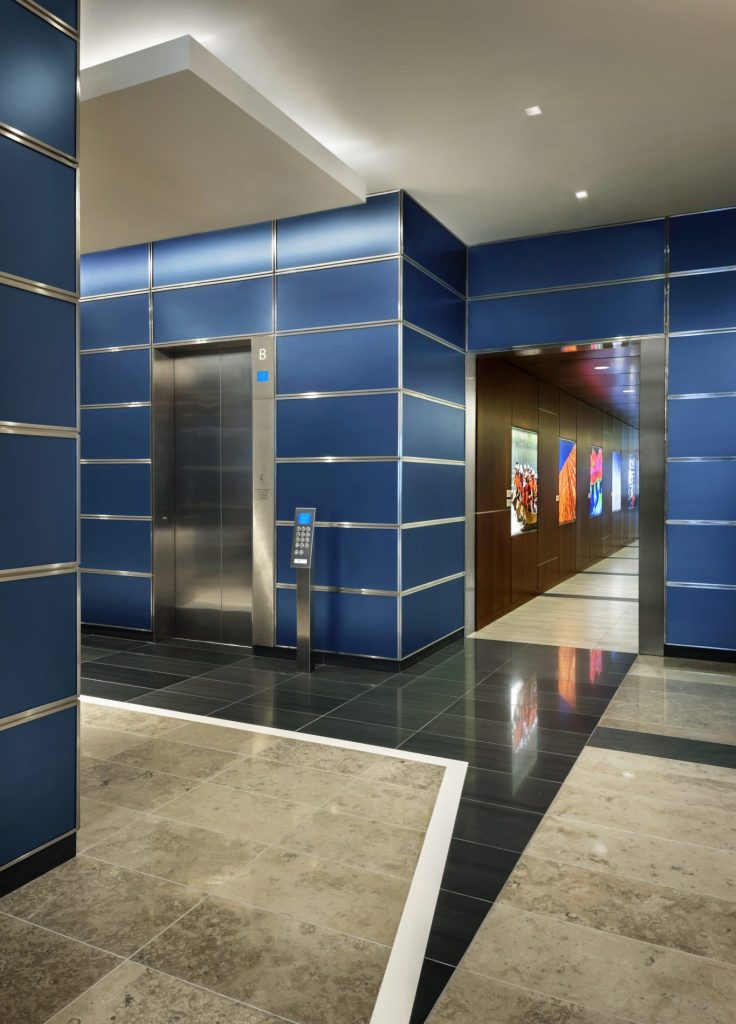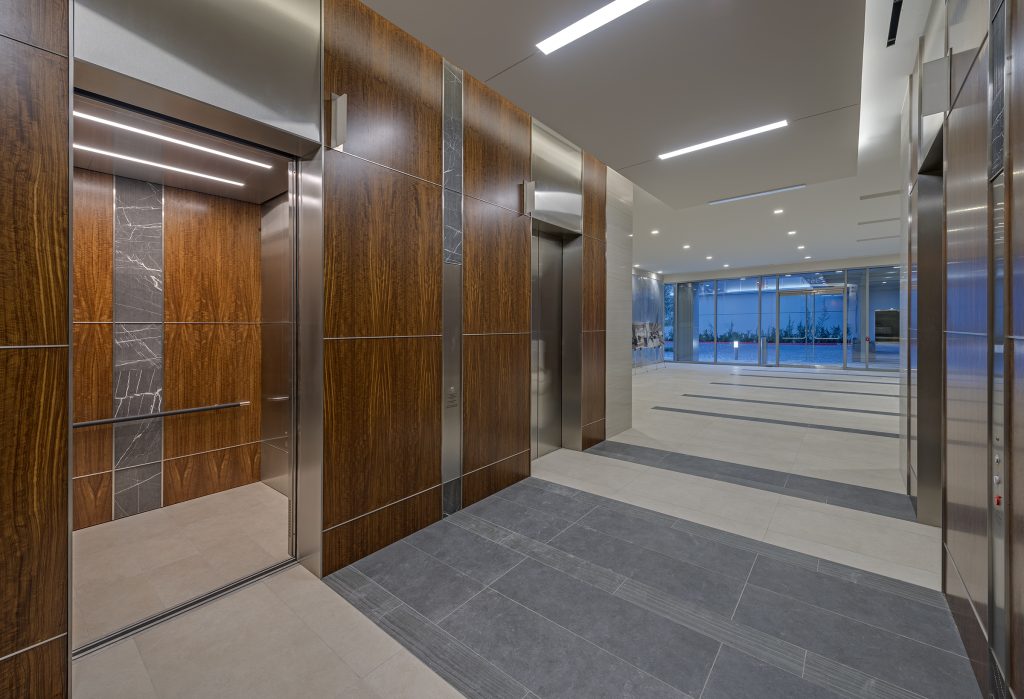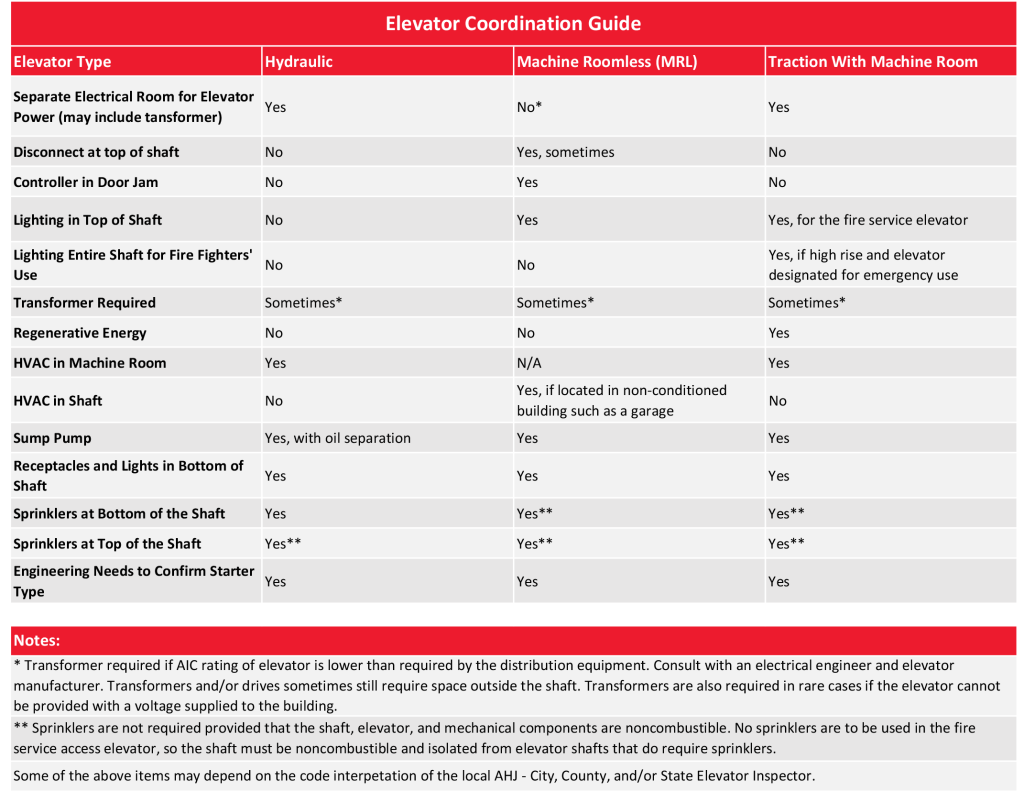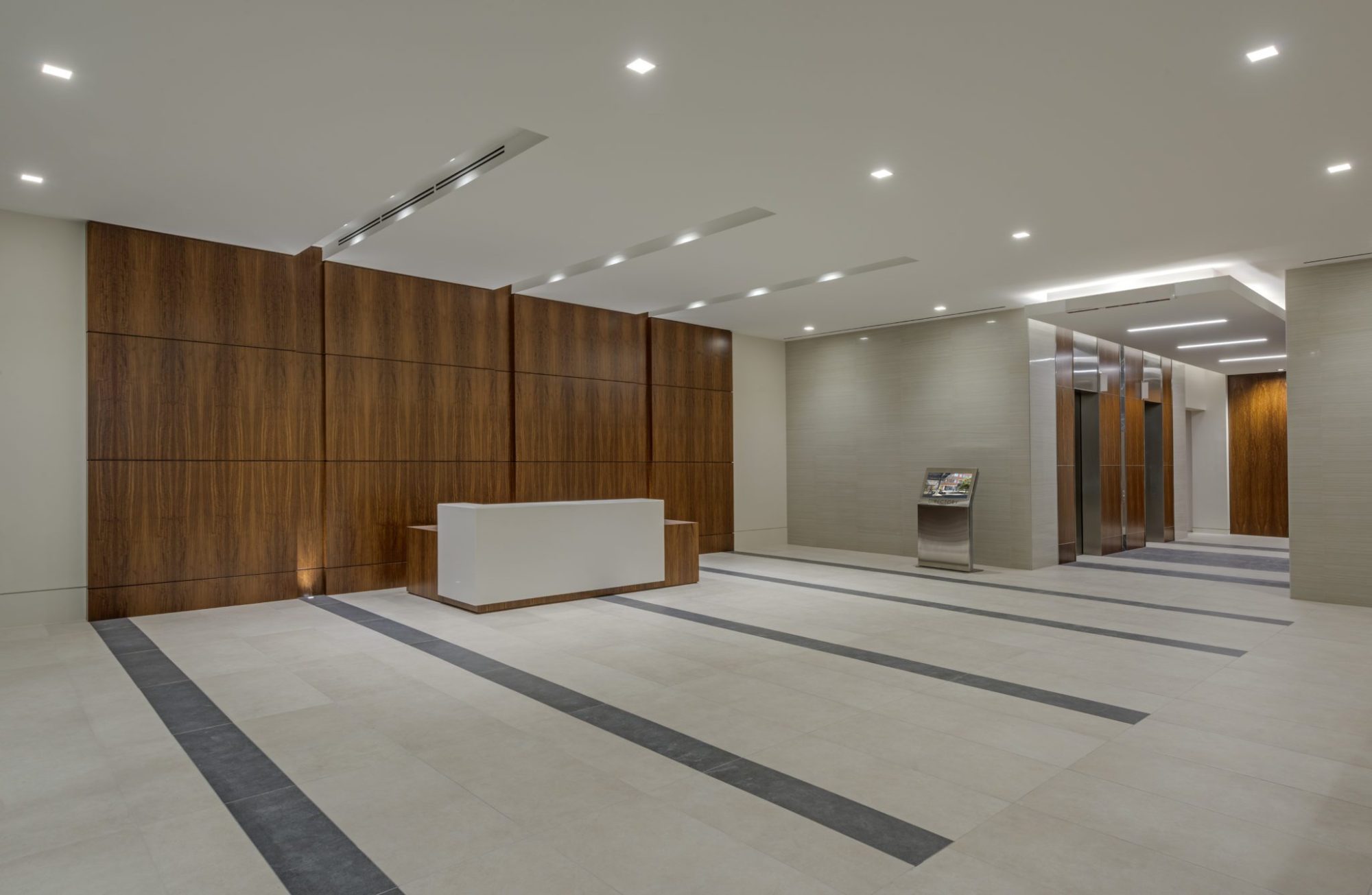
Elevators are a single building component that involves just about every design discipline and construction trade. Coordination of all elements during design requires a deliberate effort by the design team. Coordination with the structural engineer is the most obvious and typically takes place very early, but elevators and their associated equipment also require coordination with mechanical, electrical, plumbing, fire protection, fire alarm, and telecommunications systems.
A number of codes govern the construction of elevators, their shafts, and associated components. Building and fire codes govern fire protection, fire-rating requirements, and smoke control for occupant safety. The American Society of Mechanical Engineers publishes ASME A17.1 – Safety Code for Elevators and Escalators. This standard is the code by which state-authorized elevator inspectors examine installations to verify proper installation, maintainability, and safe operation. Local authorities and utility providers regulate drainage and discharge of sump drains. The National Electric Code (NEC) has regulations relating to all electrical components.
Below are a few items to keep in mind for the coordination of the elevator on your next project:
What does machine room-less really mean? All major elevator manufacturers are offering machine room-less (MRL) systems. These systems eliminate the need for a separate room to house hydraulic pumps, control panels, etc. However, they do present some challenges. The controller must still be located so that it is accessible and maintainable. The equipment still requires ventilation or cooling. Each manufacturer has specific requirements for providing power and maintenance access to the equipment. Space must be provided for fused switches, the transformer, the telephone interface, and the fire alarm interface. Consult with the elevator manufacturer’s recommendations for acceptable locations and with the MEP engineer for space requirements.
Hoistway pressurization: Pressurization of hoistways is required in high-rise buildings if rated elevator lobbies are not constructed on each of the connected floors. If pressurization is preferred rather than the fire-rating of elevator lobbies, ventilation and relief air paths must be coordinated.
Hoistway electrical requirements: GFCI receptacles, light fixtures, and a light switch are required in the elevator pit. MRL systems require a GFCI receptacle, light fixtures, a light switch, and a motor disconnect switch located at the top of the shaft.
Sump pump requirements: Sump pumps are required in almost every case. Sump pits must be coordinated with the structural engineer to accommodate the pump and prevent interference with the elevator. For hydraulic elevators, coordinate with local jurisdictions on whether an oil separator is required, and where the discharge of the sump pump is permitted, usually sanitary sewer.
Emergency power: Emergency power is required to operate elevators in high-rises and other specific applications. When required, power must automatically transfer to the backup power source for each elevator and all associated systems including lighting and HVAC for shafts and machine rooms. An LED indicator light is required by each individual elevator or bank of elevators to illuminate when operating on emergency power.

Power supply: Power requirements for the specified elevator must match the available voltage for the building. The most common voltages are 480 volt 3-phase and 208 volt 3-phase. The electrical engineer will need to know the voltage, motor horsepower, and fault current rating during design. An elevator control module that includes a fused disconnect switch, shunt trip, and fire alarm interface is required to serve power to the elevator controller. A fused, lockable disconnect is required for each elevator for elevator cab lighting. The location of power delivery varies with the manufacturer and elevator type and must be coordinated. Elevator equipment is often selected with the lowest possible fault current rating to minimize cost. If a higher fault current rating is required because of the electrical service and distribution, there are two options: either a higher fault current rating must be specified for the elevator equipment, or a transformer must be provided in the electrical system design. When changing an elevator specification or considering a substitution, it is important to keep in mind that the electrical requirements may differ and the cost of the electrical changes must be accounted for.
HVAC: Independent ventilation and/or air-conditioning is required to keep elevator equipment in safe operating conditions. ASME A17.1 requires that elevator equipment be maintained at temperatures between 55°F and 90°F with relative humidity no greater than 80%, or as specifically required by the manufacturer. This requirement applies whether the equipment is in a dedicated equipment room or in the shaft, as with MRL elevators. In unconditioned buildings, such as parking structures, the shaft itself must be conditioned to protect the equipment.
Fire protection and fire alarm: Elevator shafts and machine rooms must have fire sprinklers if the building has an automatic fire sprinkler system, with some exceptions for noncombustible construction. Smoke detectors are required in the elevator lobby on each floor the elevator serves. Fire alarm devices are required in the shaft depending on the exact project conditions.
Telecommunications: Elevators are required to have a dedicated analog phone line for communication within the cab capable of both incoming calls and outgoing calls. Wireless communications may be used if outside lines are not available.
Energy saving systems: Many elevators are available with regenerative energy systems which convert the kinetic energy of the cab descending into electrical power that can be used in the building, similar to the braking systems in most hybrid and electric cars. The characteristics of the specific elevator(s) must be coordinated with the building power system and emergency backup system. A load bank may be required to absorb power generated by an elevator operating in an emergency scenario, such as a power outage or fire.
To coordinate all the items described above, it is best to begin early. We recommend requesting comprehensive information from the elevator manufacturer. The guide below can be used as a reference for the requirements of various types of elevators. If you have additional questions, feel free to reach out to us.



